Links to Wicking beds
trailer_katie keeps her cool.wmvwicking bed history.html
wicking worm beds.pdf
Links to water management
The wicking bed is an innovative technology, essentially a new agricultural system. They give increased food production, with significantly less water, recycle organic waste to provide plant nutrients, reduce chemical run off into our rivers and sequester carbon into the soil, helping to reduce climate change.
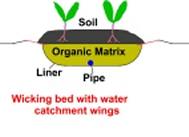 |
An underground water reservoir is filled with organic waste and
water. Nutrient rich water,
essentially a compost tea wicks upwards to the root zone.
The soil is maintained moist, not saturated giving increased food
production.
Water can also be harvested by directing run-off into the wicking bed. see "wicking_bed_technology.pdf" |
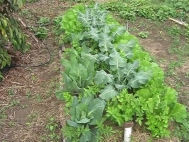 |
Significant quantities of water are stored in the reservoir so watering can be less frequent and making the beds better adapted to erratic rainfall. Production is higher than conventional systems with less need for external inputs of water and fertilizer. |
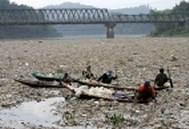 |
Any water applied is contained in the reservoir so run off into aquifers or the river system is reduced. Instead urban waste, sewage and forest trimmings to reduce bush fires can be recycled, preserving nutrients. |
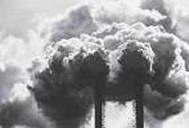 |
Significant quantities of atmospheric carbon
can be sequestered and embedded into the soil. Carbon is embedded
into chemically stable humus by micro biological action which
thrives in the moist conditions. This removes on of the major impediments to obtaining a global agreement on climate change. see carbon_capture_in the soil and resolving_climate_change.pdf |
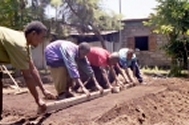 |
Wicking beds are well suited to developing countries improving their food security while allowing then to expand their economies while controlling emissions. This removes on of the major impediments to
obtaining a global agreement on climate change. |
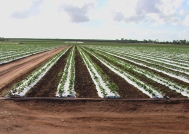 |
Wicking beds are widely used in
How to achieve this scale is discussed in |
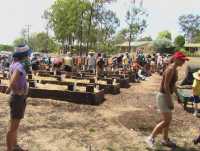 Wicking beds were initially developed as a way of managing
an erratic rainfall. Experience showed then to be a highly
productive growing system.
Wicking beds were initially developed as a way of managing
an erratic rainfall. Experience showed then to be a highly
productive growing system.
The wicking bed enables us to grow food with a lot less water, it can be used to harvest water otherwise lost and particularly it can actually capture carbon from the atmosphere.
The wicking worm bed is a highly productive growing system which not
only produces more food from limited water, but also recycles waste
organic material to provide plant nutrient and capture carbon.
The essence is to form an underground reservoir of water or pond
contained by a waterproof container or liner below the surface.
vision.pdf
Summary - This report presents a technology
designed to improve food security and offset climate change by taking
carbon from the atmosphere and embedding in the soil.
While plants absorb many times man-made emissions
most of the carbon is returned to the atmosphere by degradation and
decomposition so there is only marginal benefit in reducing atmospheric
carbon. This technology diverts this stream of returning carbon back
into the soil to regenerate top soil to simultaneously enhance food
production and reduce atmospheric carbon.
Climate change - capturing carbon in the soil
 With the
rapid growth of the developing countries, particularly coal burning
countries like China and India we are not going to be able to reduce our
carbon emission adequately to control global warming.
With the
rapid growth of the developing countries, particularly coal burning
countries like China and India we are not going to be able to reduce our
carbon emission adequately to control global warming.
The only solution is to extract carbon from the atmosphere. Plant already extract 30 times more carbon than total and made emissions. The problem it that this carbon rapidly en-enters the atmosphere. This chapter shows how we can retain this carbon in the soil
principles (added 21/12/12)
discusses the basic principles underlying the wicking bed
The next great change.pdf
(added 16 July 2012)
xinxiang12june.ppt
(added 20/6/2012)
Report on wicking beds and weather released 1st Feb 2012
wicking beds and global warming
www.youtube.com/watch?v=80-dkv1Au-8.
Wicking beds and climate change
climate change -obstacles to getting a global agreement
food production and climate
change
plants absorbing carbon
dioxide
wicking_ bed_
technology (pdf)
Review of Copenhagen (pdf)
The future of agriculture (pdf)
Soil regeneration
See Soil Biopacks
and Development of soil BioPack October newsletter
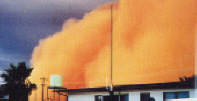 Tests carried out over 30 years ago showed that soil could
be rapidly regenerated by controlling the moisture level in the
soil to encourage the right type of micro-biological action.
Tests carried out over 30 years ago showed that soil could
be rapidly regenerated by controlling the moisture level in the
soil to encourage the right type of micro-biological action.
Today this technology is important as it captures atmospheric carbon and so can offset climate change. However it does require water to maintain the soil moisture levels - in a dry continent like Australia this presents a major challenge. Subsequently technologies such as improved irrigation scheduling, local water harvesting, subsurface irrigation and the wicking bed were developed for the more effective use of water.
vision.pdf looks at soil regeneration
soil_maker how to create quality top soil (20 Feb 2012)
 Improved irrigation
scheduling is the easiest and cheapest way of making more effective use
of water. Traditionally scheduling has been a hit and miss affair
which was marginally improved by using crop factors and evaporation
data. However this is an open loop system with no in build feed
back so significant water is still wasted. Here we look as
closed loop systems taking advantages of improved instrumentation for
soil and plant moisture monitoring to control irrigation depth
Improved irrigation
scheduling is the easiest and cheapest way of making more effective use
of water. Traditionally scheduling has been a hit and miss affair
which was marginally improved by using crop factors and evaporation
data. However this is an open loop system with no in build feed
back so significant water is still wasted. Here we look as
closed loop systems taking advantages of improved instrumentation for
soil and plant moisture monitoring to control irrigation depth
Improved flood irrigation and water harvesting
Subsurface and improved flood irrigation
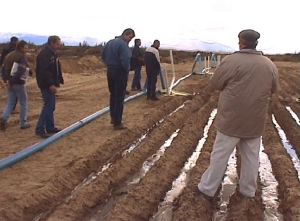 Subsurface irrigation was initially seen as way of saving
water lost by evaporation. A wide range of
experiments however led to the conclusion that practical difficulties
severely limit its application. The experimental focus was
then switched to developing a computer simulation of flood irrigation to
improve its efficiency.
Subsurface irrigation was initially seen as way of saving
water lost by evaporation. A wide range of
experiments however led to the conclusion that practical difficulties
severely limit its application. The experimental focus was
then switched to developing a computer simulation of flood irrigation to
improve its efficiency.
Technically successful but with limited commercial uptake this was not regarded as a success but it did lead onto the highly successful wicking bed technology.
 Australia is often considered to be a dry continent,
in fact it has reasonable rainfall. The problem is excessive
evaporation so much of the rain is lost by evaporation before it can be
used by plants or captured in our dams.
Australia is often considered to be a dry continent,
in fact it has reasonable rainfall. The problem is excessive
evaporation so much of the rain is lost by evaporation before it can be
used by plants or captured in our dams.
Here we look at how local water harvesting can capture water but minimizing this evaporation.
Buy on line
Books and DVD's
Solving the Water Crisis (DVD)
Water and the Whistle blower (DVD)
Katie keeps her cool -
wicking worm beds and
global warming
(DVD)
00
James Bond adventure thriller about a beautiful Euro-Asian girl plan to
capture James to protect the secrets of soils which give a healthy and
long life. Pure fiction but based on a factual village in China
where people normally live into there nineties or hundreds free of
cancer, diabetes etc. See flyer below
Many gardeners around the
world are now using the wicking bed system which I developed over ten
years ago.
My belief is that the wicking bed system has much
wider application than hobby gardeners and can be used on a large scale
in agriculture to ensure food security and to help resolve climate
change. Soil can absorb very large amounts of carbon and can offset
greenhouse gasses for many years. This has been the subject on my recent
research which I believe has global importance. I have written 3 books
on resolving climate change at resolving climate
change.
Access more files from index use
date order to check for new files, by subject for specific
topics
DVD links
solving the water crisis
DVD links wicking
beds
china.ppt
wicking bed.ppt